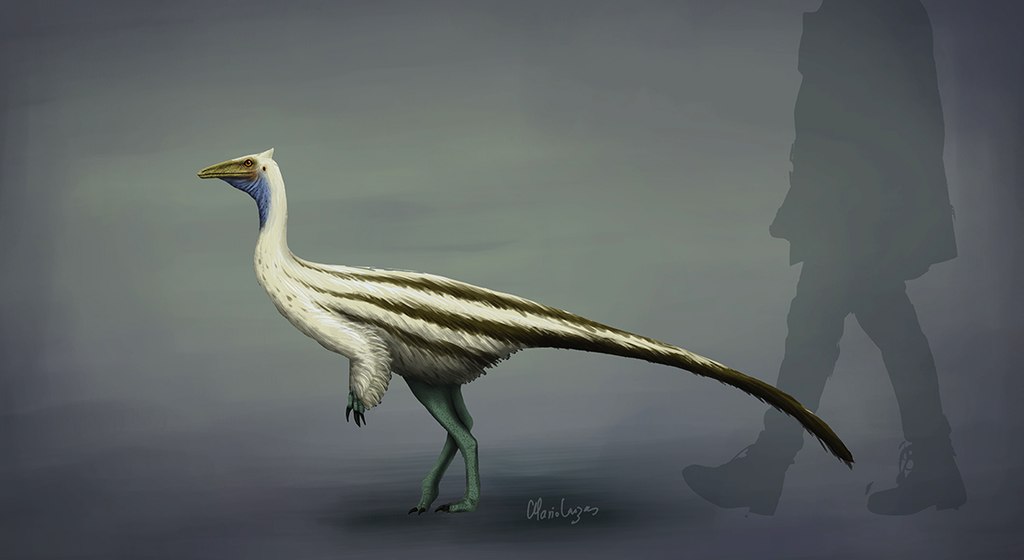Picture this: a dinosaur with the delicate beak of a pelican but armed with more teeth than a crocodile’s worst nightmare. That’s exactly what scientists discovered when they unearthed Pelecanimimus polyodon in the Spanish countryside during the 1990s. This remarkable creature shattered everything paleontologists thought they knew about ornithomimids – those ostrich-like dinosaurs that were supposed to be toothless plant-eaters. Instead, they found a predator so unique that it rewrote the evolutionary playbook and left researchers scratching their heads in wonder.
The Spanish Discovery That Changed Everything
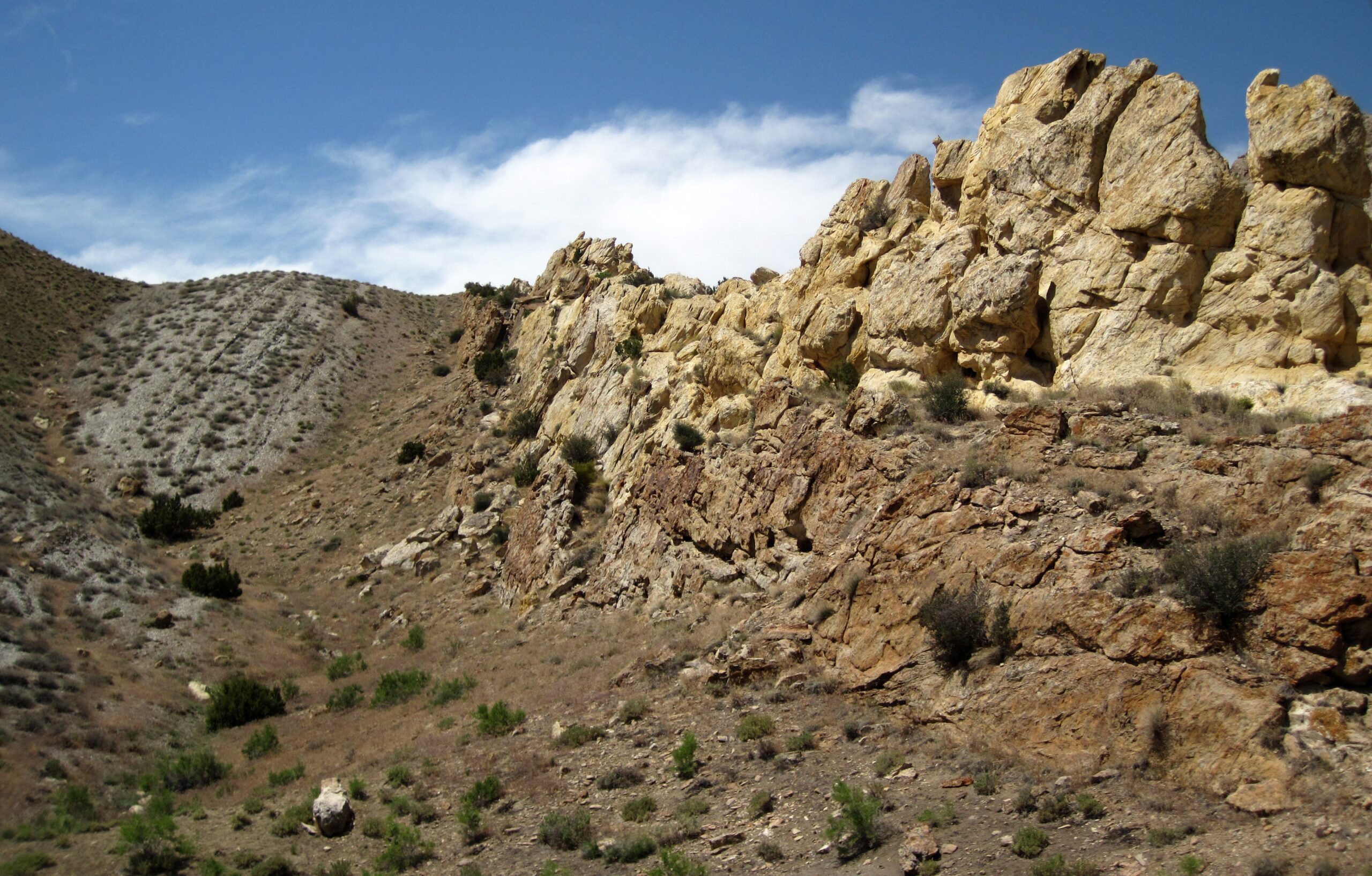
The limestone quarries of Las Hoyas in Cuenca, Spain, have yielded some of the world’s most extraordinary fossils, but nothing prepared scientists for what they found in 1993. Buried in 125-million-year-old rock, the nearly complete skeleton of Pelecanimimus polyodon emerged like a time capsule from the Early Cretaceous period. The preservation was so exceptional that even soft tissues like skin impressions and possible muscle fibers were visible, making it one of the most complete theropod dinosaurs ever discovered in Europe. What made this find truly groundbreaking wasn’t just its completeness, but the shocking revelation that this ostrich-like dinosaur possessed an arsenal of tiny, needle-sharp teeth. The discovery team, led by Spanish paleontologist Bernardino Perez-Moreno, knew immediately they had stumbled upon something that would challenge conventional wisdom about dinosaur evolution.
A Toothy Contradiction in Dinosaur Evolution
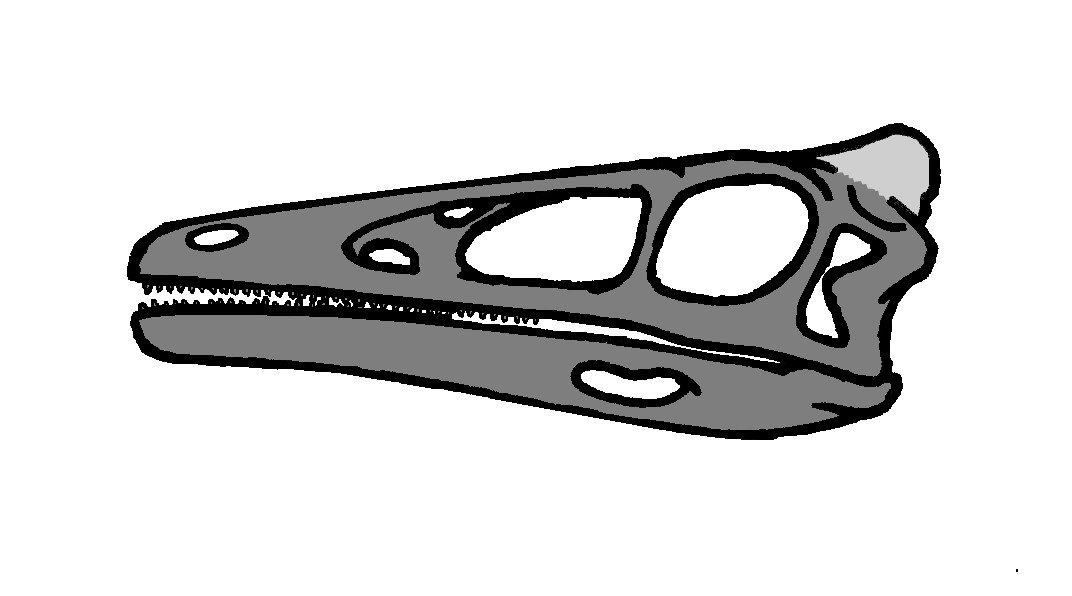
Pelecanimimus polyodon literally means “many-toothed pelican mimic,” and the name couldn’t be more fitting for this evolutionary puzzle. While most ornithomimids – the ostrich dinosaurs – had completely toothless beaks adapted for herbivorous lifestyles, Pelecanimimus packed an incredible 220 teeth into its elongated skull. These weren’t the massive crushing teeth of a T. rex, but rather tiny, densely packed needles perfectly designed for gripping slippery prey. The sheer number of teeth exceeds that of any other known dinosaur, making Pelecanimimus the undisputed champion of dental abundance in the prehistoric world. This dental array suggests a diet far removed from the plant-munching habits of its later relatives, pointing instead to a lifestyle built around catching and consuming small, quick-moving prey like fish, amphibians, and possibly early birds.
Size Matters: A Compact Killing Machine

Standing about 6 feet tall and measuring roughly 8 feet in length, Pelecanimimus wasn’t exactly a giant among dinosaurs, but its compact size was actually its greatest asset. Think of it as the sports car of the dinosaur world – built for speed, agility, and precision rather than raw power. Its lightweight frame, estimated at around 50-60 pounds, allowed for lightning-fast movements that would have been essential for catching quick-moving prey. The dinosaur’s proportions were perfectly balanced, with long, powerful legs for sprinting and a flexible neck that could dart and weave like a striking snake. This size also meant Pelecanimimus could navigate through dense vegetation and shallow waterways where larger predators couldn’t follow, giving it access to ecological niches that bigger dinosaurs simply couldn’t exploit.
The Pelican Connection: More Than Just a Name

The resemblance between Pelecanimimus and modern pelicans goes far beyond superficial appearance, revealing fascinating parallels in hunting strategies and ecological roles. Both creatures possessed elongated skulls with expandable throat pouches, though the dinosaur’s version was likely more muscular and less stretchy than a pelican’s famous pouch. Like pelicans, Pelecanimimus probably spent considerable time near water bodies, using its keen eyesight to spot movement beneath the surface before striking with lightning speed. The similarities extend to their feeding behavior as well – both were opportunistic predators that could switch between different prey types depending on availability. However, where pelicans are primarily fish-eaters, Pelecanimimus had the dental equipment to tackle a much broader menu, from aquatic creatures to small terrestrial animals that ventured too close to the water’s edge.
Hunting Strategies of an Ancient Fisherman
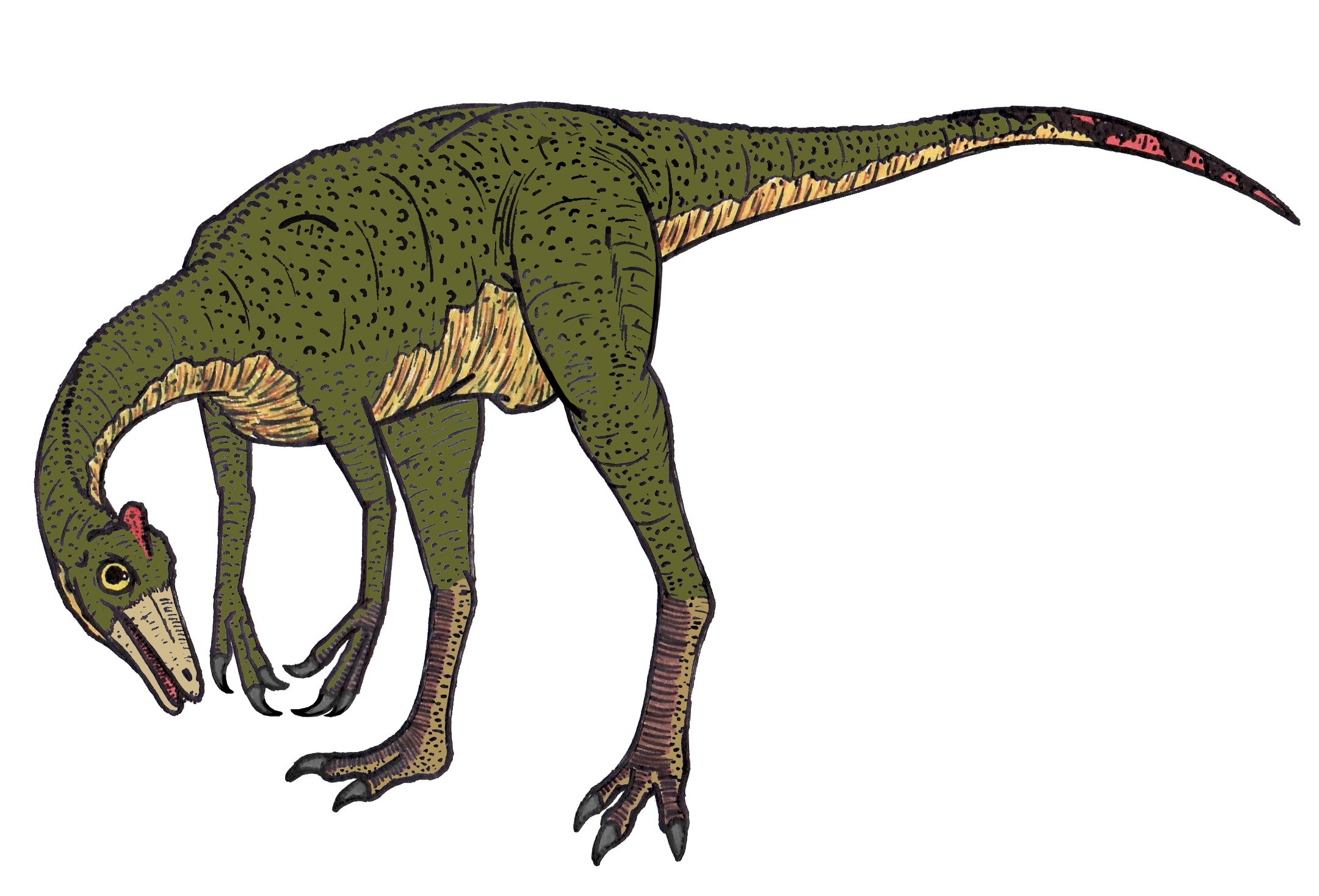
Imagine standing by a peaceful Cretaceous lagoon when suddenly the water explodes in a shower of spray and scales as Pelecanimimus strikes with surgical precision. This dinosaur was likely an ambush predator, using patience and timing rather than brute force to secure its meals. Its hunting strategy probably resembled a combination of a heron’s patient stalking and a crocodile’s explosive strike, waiting motionless in shallow water before unleashing a lightning-fast attack on unsuspecting prey. The numerous small teeth were perfect for maintaining a grip on slippery fish, while the flexible neck allowed for rapid directional changes during the crucial moment of capture. Evidence suggests that Pelecanimimus might have also employed a technique similar to modern flamingos, using its beak to filter small organisms from muddy water, though this behavior would have been supplemented rather than replaced by active hunting.
The Mystery of Soft Tissue Preservation
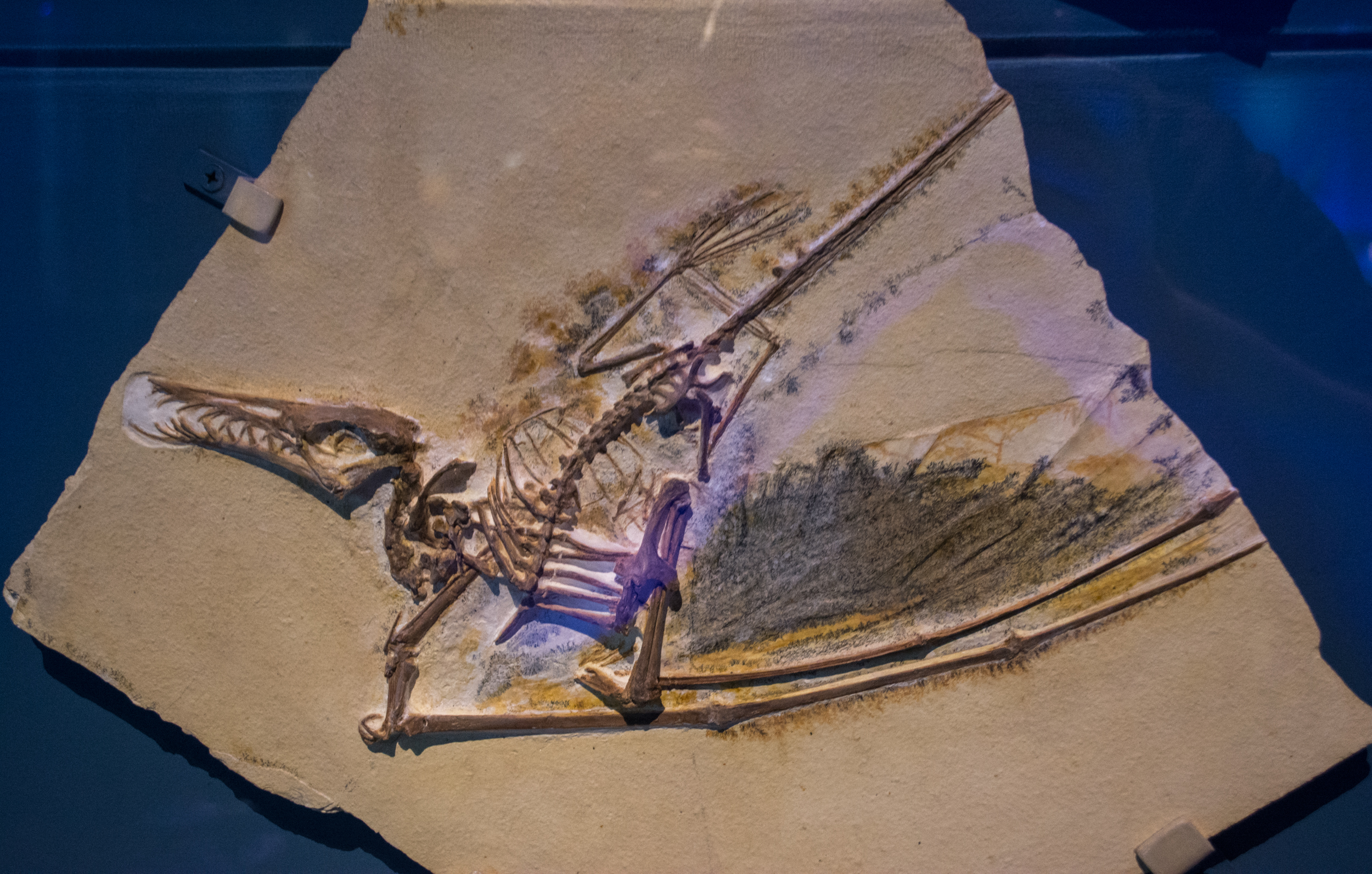
What makes the Pelecanimimus fossil truly extraordinary isn’t just the bones – it’s the incredibly rare preservation of soft tissues that normally decay within days of death. The Las Hoyas specimen shows clear impressions of skin texture, possible muscle fibers, and even what might be the outline of internal organs, providing an unprecedented window into the dinosaur’s actual appearance and anatomy. This level of preservation occurs only under very specific conditions, typically involving rapid burial in fine-grained sediment with low oxygen levels, essentially creating a natural mummy. The soft tissue evidence suggests that Pelecanimimus had a throat pouch similar to pelicans, possibly used for temporary food storage or as a display feature during mating rituals. These delicate impressions have allowed scientists to reconstruct not just what the dinosaur looked like, but how it might have moved, breathed, and even how its muscles were arranged, bringing this ancient predator to life in ways that bones alone never could.
Spain’s Cretaceous Ecosystem: A Predator’s Paradise
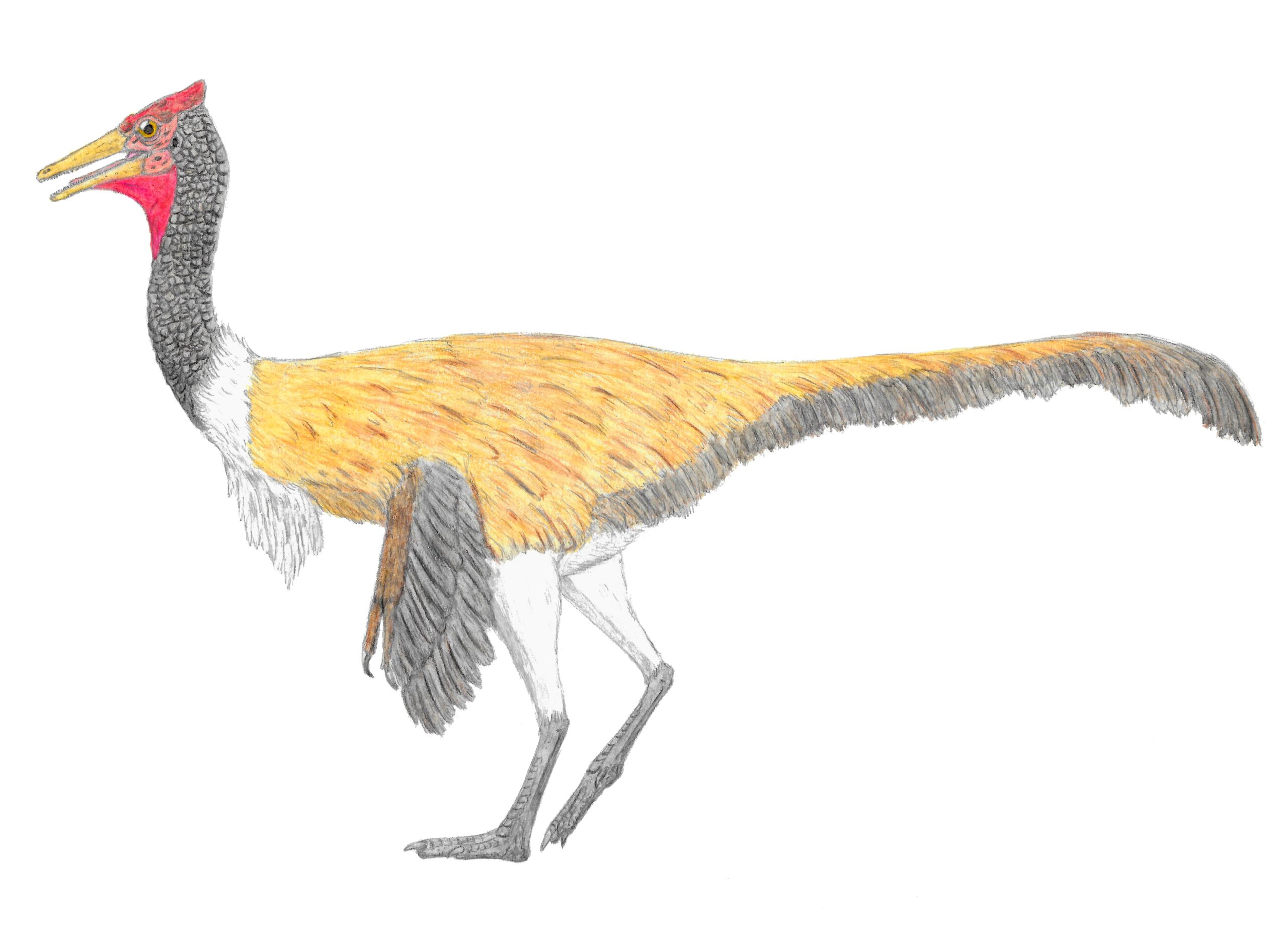
The Spain of 125 million years ago was a dramatically different world, dominated by warm, shallow seas, extensive lagoons, and lush coastal plains that created perfect hunting grounds for specialized predators like Pelecanimimus. This semi-aquatic environment teemed with life, from primitive birds and pterosaurs in the air to early mammals scurrying through the underbrush, while the waters hosted an abundance of fish, amphibians, and marine reptiles. The climate was considerably warmer than today’s Spain, with no polar ice caps and sea levels much higher than current ones, creating a tropical paradise where dinosaurs could thrive year-round. Pelecanimimus shared this ecosystem with other fascinating creatures, including the sail-backed spinosaur Concavenator, various species of crocodiles, and an array of primitive birds that might have served as both competition and prey. The abundance of prey species and the varied terrain of coastlines, islands, and river deltas provided numerous hunting opportunities for a versatile predator like Pelecanimimus, explaining how such a specialized dinosaur could evolve and flourish in this ancient Spanish landscape.
Evolutionary Oddball: Breaking the Ornithomimid Mold
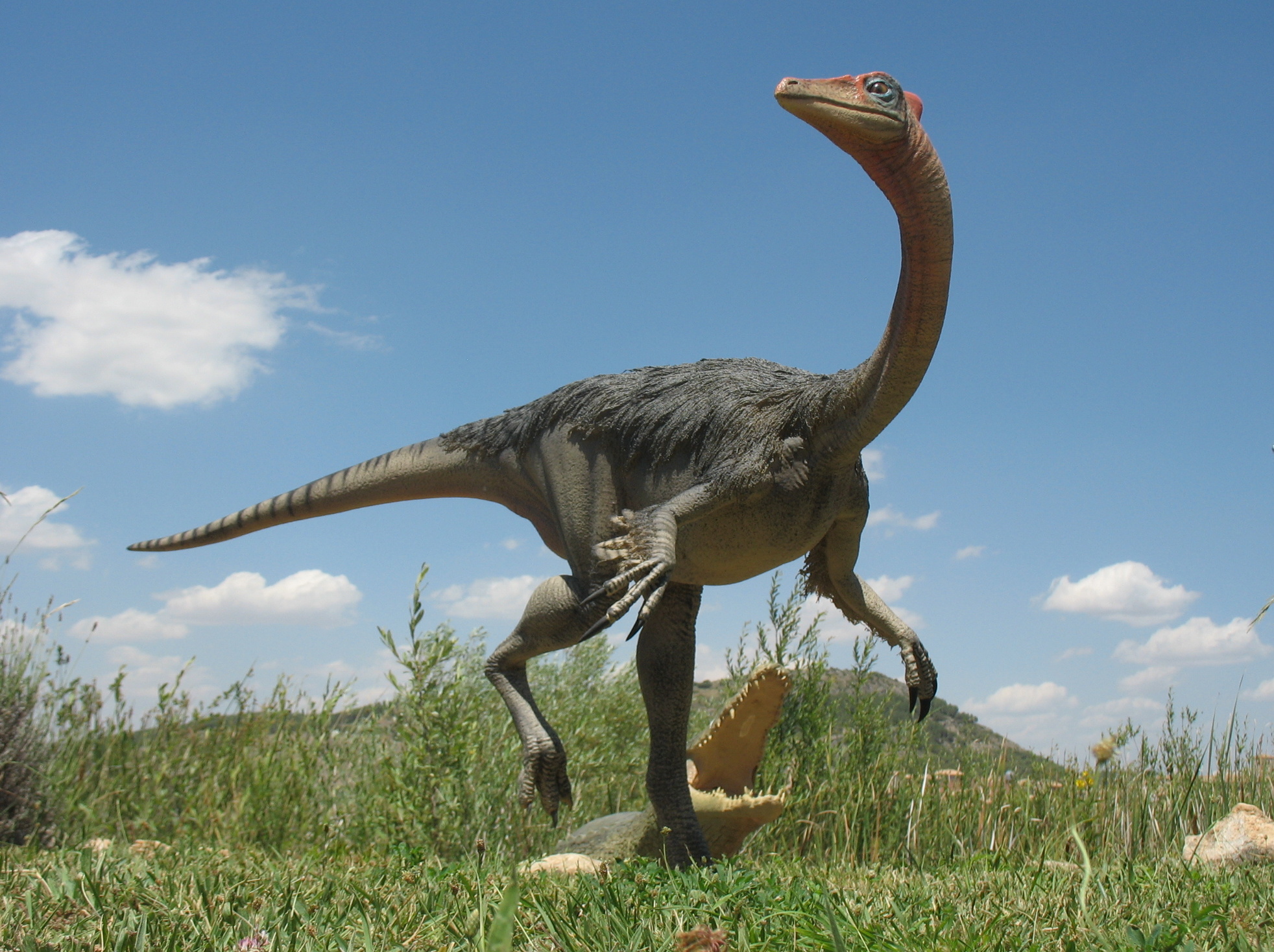
In the family tree of ornithomimids, Pelecanimimus stands out like a punk rocker at a classical music concert – clearly related but marching to its own evolutionary beat. Most ornithomimids evolved toward herbivory, developing toothless beaks and long necks perfect for browsing on high vegetation, but Pelecanimimus took the opposite path, becoming increasingly specialized for predation. This evolutionary divergence suggests that early ornithomimids were much more diverse in their ecological roles than previously thought, with different lineages adapting to various environmental niches. The presence of so many teeth in Pelecanimimus indicates that tooth loss in other ornithomimids wasn’t a primitive condition but rather a derived adaptation for plant-eating. This discovery has forced paleontologists to reconsider the entire evolutionary history of these dinosaurs, recognizing that the group was once much more ecologically diverse than the plant-eating specialists we see in later forms like Struthiomimus and Ornithomimus.
The Dental Arsenal: Engineering Marvel of Nature
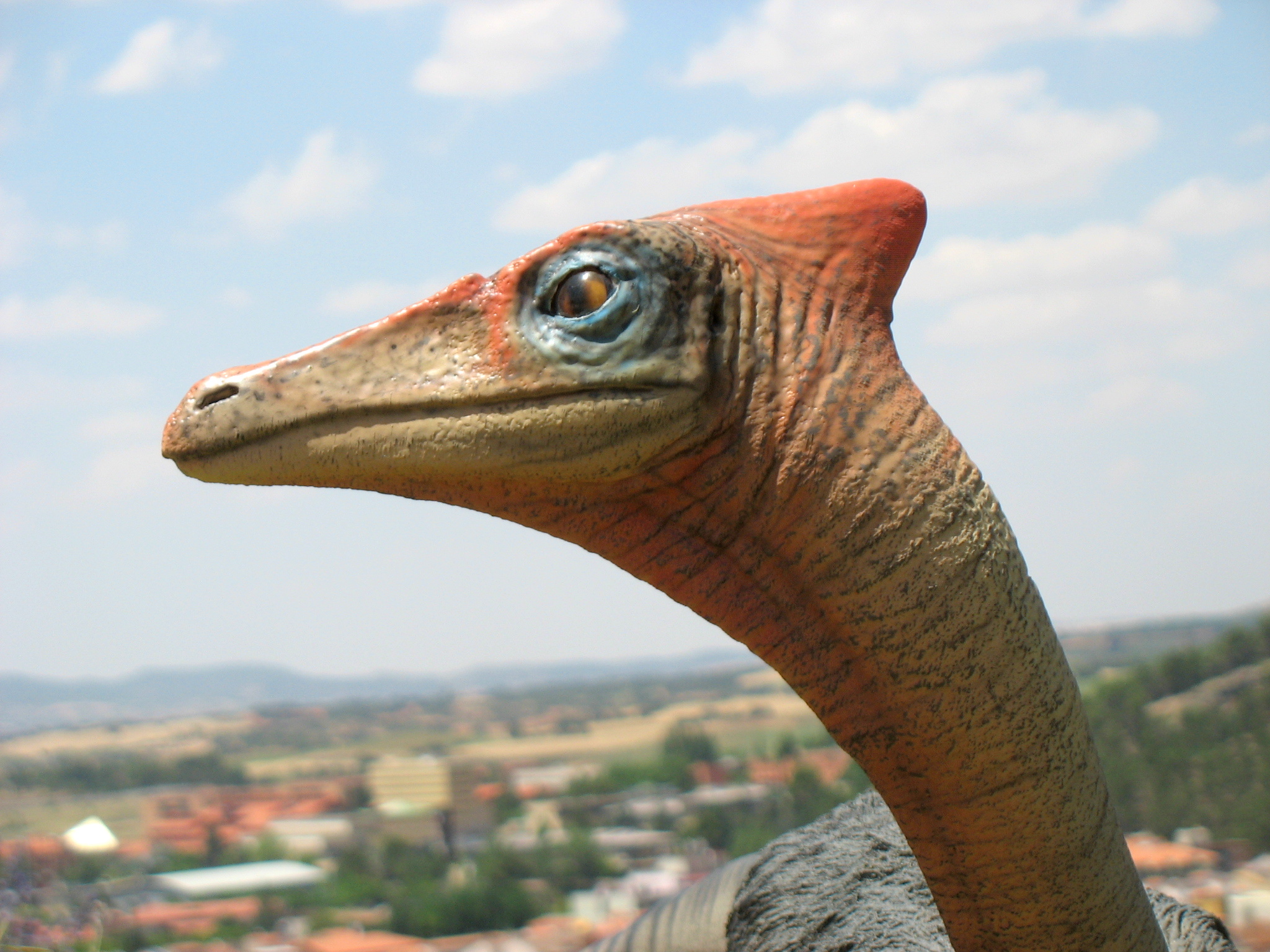
The 220 teeth of Pelecanimimus weren’t randomly scattered throughout its mouth but were arranged in a precise, functional pattern that reveals sophisticated evolutionary engineering. The front teeth were longer and more pointed, perfect for initial prey capture, while the back teeth were smaller and more numerous, designed to process food and prevent escape. Each tooth was recurved slightly backward, creating a one-way trap that made it nearly impossible for slippery prey to wriggle free once caught. The teeth were also continuously replaced throughout the dinosaur’s life, ensuring that this precision instrument remained sharp and effective despite constant use. What’s truly remarkable is how these teeth were packed so densely without interfering with each other’s function – a feat of biological engineering that puts human dental work to shame and demonstrates the incredible precision of evolutionary adaptation over millions of years.
Comparing Giants: How Pelecanimimus Stacks Up

When placed alongside other famous theropod dinosaurs, Pelecanimimus reveals just how diverse these predators really were, each perfectly adapted to their specific ecological niche. While Tyrannosaurus rex terrorized the landscape with massive bone-crushing teeth and raw power, Pelecanimimus took a completely different approach, relying on speed, precision, and overwhelming numbers of tiny teeth to secure its meals. Compared to fish-eating spinosaurs like Baryonyx, Pelecanimimus was much smaller and more agile, but potentially more versatile in its prey selection due to its superior dental equipment. The closest modern comparison might be to a large fishing bird like a cormorant or anhinga, but with the added advantage of mammalian-style continuous tooth replacement. Even among its own ornithomimid family, Pelecanimimus stands alone as the only known toothed member, making it both a connecting link to ancestral forms and a unique evolutionary experiment that took predation to an extreme level of specialization.
Daily Life of a Cretaceous Fisherman

Picture a typical day in the life of Pelecanimimus: dawn breaks over the Spanish coastline as our feathered predator emerges from its nighttime roost, possibly in dense vegetation near the water’s edge. The morning hours would have been prime hunting time, as fish became active in the warming waters and small animals came to drink at the shoreline. Using its excellent eyesight, Pelecanimimus would scan the water surface for telltale ripples indicating fish movement below, then position itself strategically for an ambush attack. Between active hunting sessions, it might have engaged in social behaviors with other members of its species, possibly displaying its throat pouch or engaging in ritualized feeding demonstrations to establish territory or attract mates. As the day progressed and prey became warier, our dinosaur might have switched tactics, using its beak to probe muddy shallows for hidden amphibians or small crustaceans, demonstrating the behavioral flexibility that made it such a successful predator in its ancient Spanish homeland.
The Feather Factor: Dressed for Success
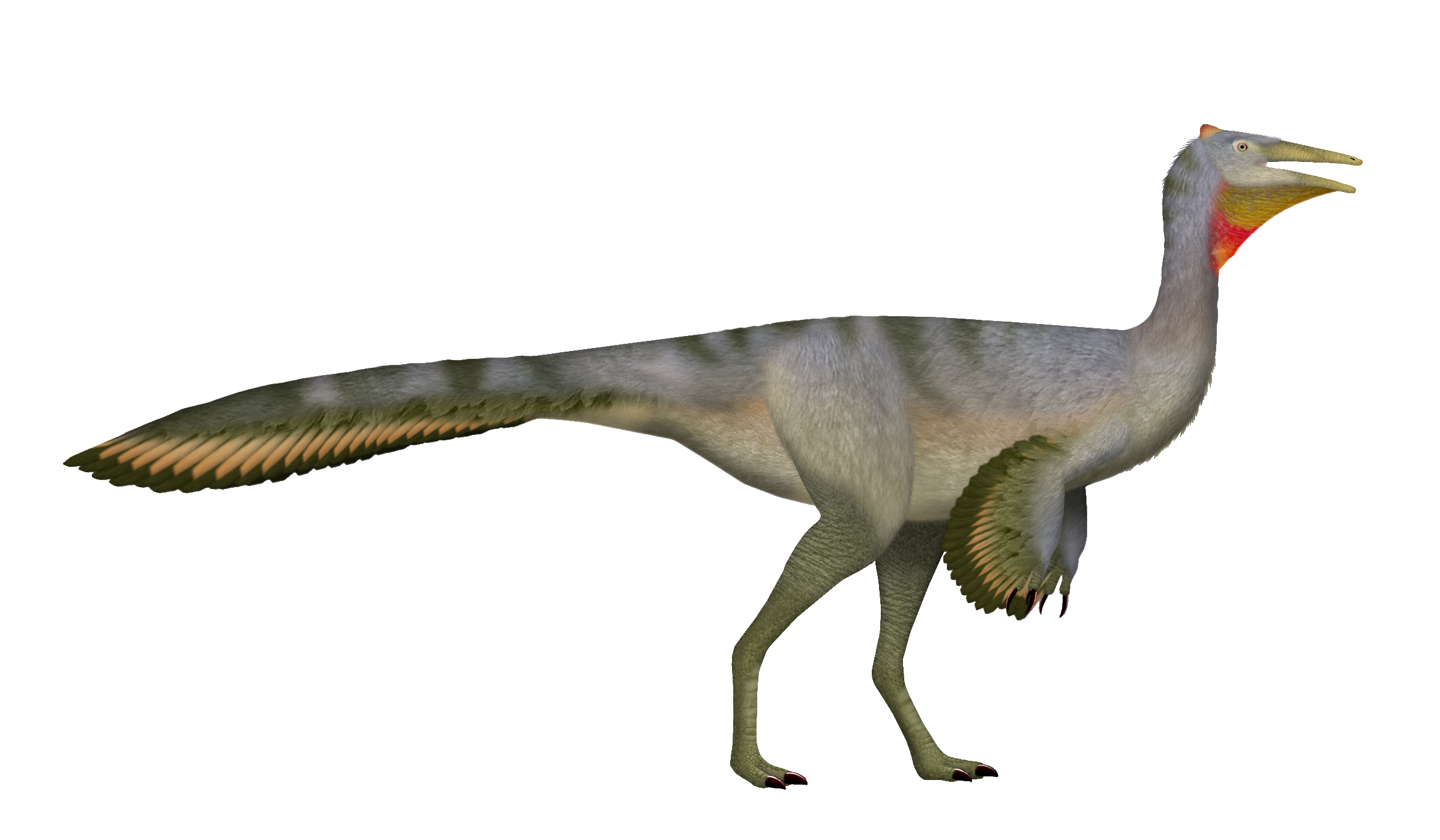
While direct evidence of feathers hasn’t been preserved in the Pelecanimimus fossil, the exceptional soft tissue preservation strongly suggests that this dinosaur was indeed feathered, following the pattern established by other members of its family group. These feathers wouldn’t have been the flight feathers of modern birds, but rather a primitive covering that served multiple functions in the dinosaur’s daily life. The feathers likely provided insulation for temperature regulation, crucial for an active predator that spent long periods motionless while hunting, and they may have played important roles in display and species recognition. Modern reconstruction artwork typically shows Pelecanimimus with a sleek, streamlined feather coat that would have reduced drag while moving through water and provided camouflage among the dappled shadows of coastal vegetation. The coloration of these feathers remains a mystery, but given its aquatic lifestyle, Pelecanimimus might have sported patterns similar to modern water birds – perhaps mottled browns and grays for camouflage or striking patterns for social signaling among members of its own species.
Scientific Impact: Rewriting Dinosaur History
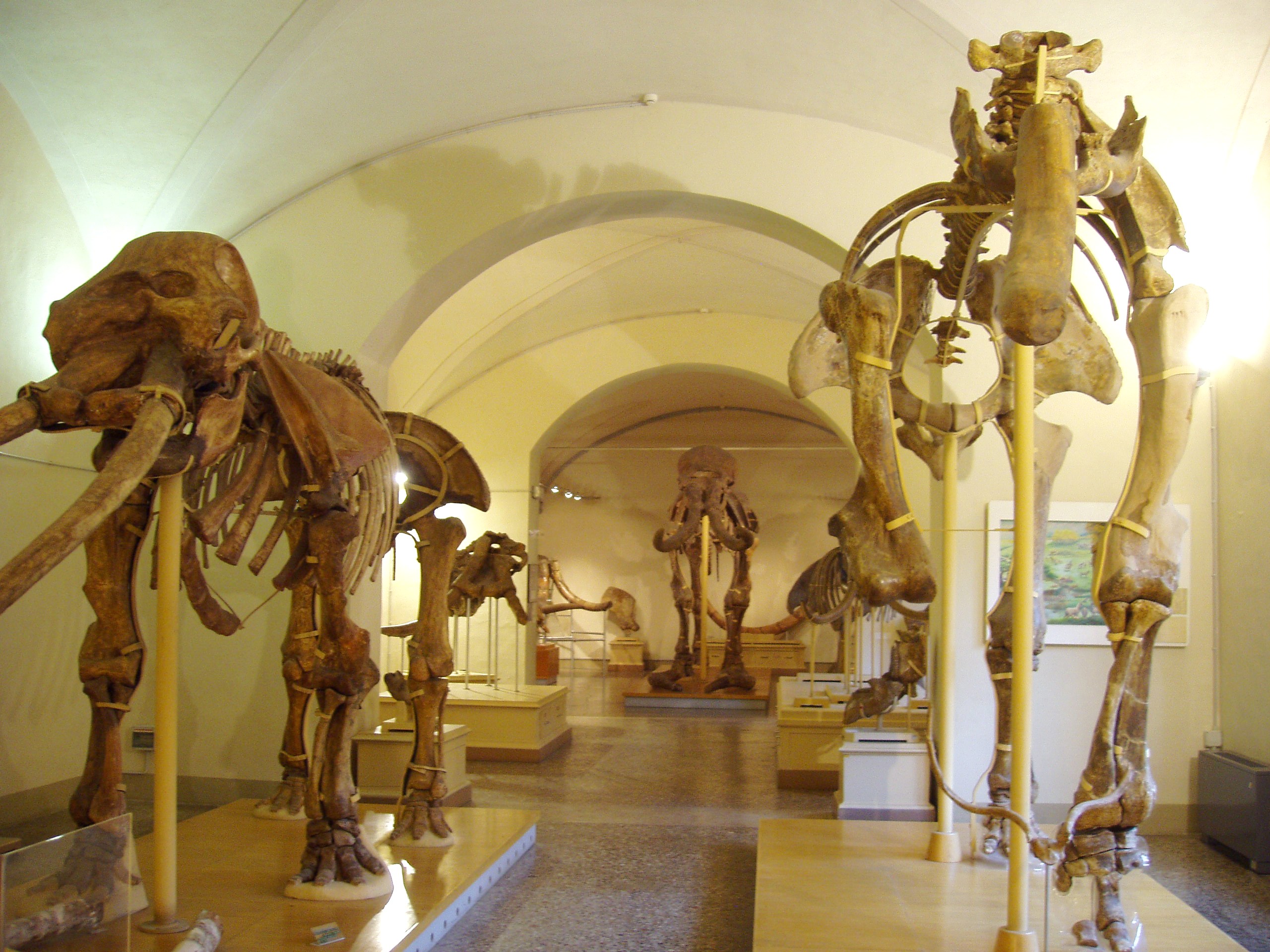
The discovery of Pelecanimimus didn’t just add another species to the dinosaur roster – it fundamentally changed how scientists understand theropod evolution and the transition from carnivorous to herbivorous lifestyles. Before this discovery, the evolutionary pathway seemed straightforward: early theropods had teeth, ornithomimids lost their teeth and became plant-eaters, end of story. Pelecanimimus proved that this narrative was far too simple, revealing that some ornithomimids actually increased their dental complexity rather than losing teeth entirely. This finding has influenced research directions across paleontology, encouraging scientists to look more carefully at transitional forms and to question assumptions about evolutionary trends. The exceptional preservation has also advanced techniques for studying soft tissue in fossils, leading to new methods that have been applied to other important discoveries worldwide. Perhaps most importantly, Pelecanimimus has shown that the Cretaceous period was even more ecologically complex than previously imagined, with specialized predators filling niches that we’re only beginning to understand.
Modern Relatives and Living Echoes
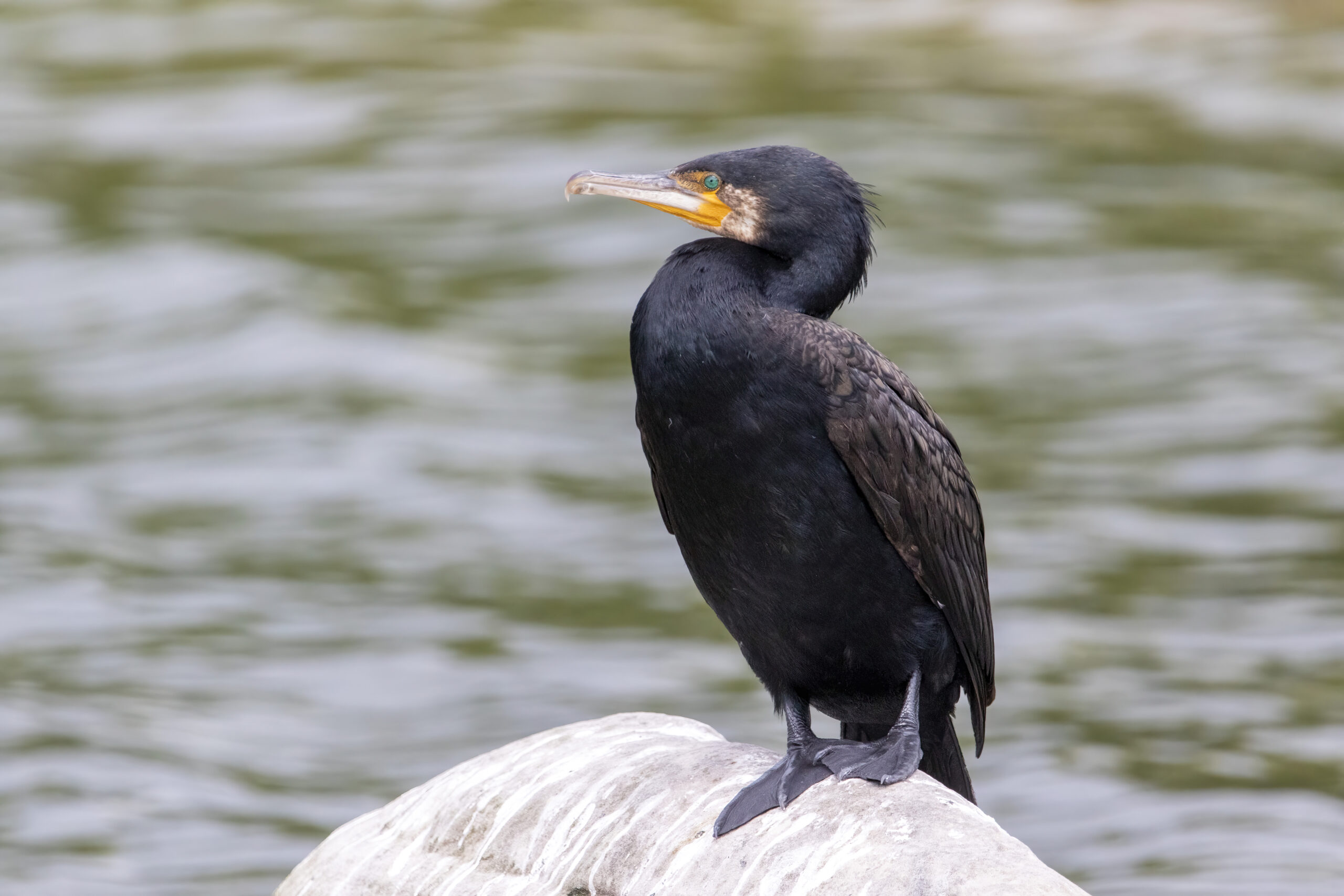
While Pelecanimimus has no direct descendants surviving today, its ecological role finds remarkable parallels in the modern world, particularly among specialized fishing birds that demonstrate similar adaptations for aquatic predation. Cormorants, with their long necks and fish-catching abilities, probably come closest to the lifestyle that Pelecanimimus perfected 125 million years ago, though they lack the impressive dental arsenal of their prehistoric counterpart. Herons and egrets share the patient hunting strategy and lightning-fast strike technique, while pelicans exhibit the throat pouch and specialized beak structure that gave Pelecanimimus its name. Perhaps most intriguingly, some modern birds like mergansers have evolved serrated edges on their bills that function somewhat like teeth for gripping slippery fish, showing that the basic problems of aquatic predation continue to drive similar evolutionary solutions. These modern parallels help scientists understand how Pelecanimimus might have behaved and interacted with its environment, providing a bridge between the fossilized remains and the living world of today.
Legacy of the Spanish Toothy Wonder

Twenty-five years after its discovery, Pelecanimimus continues to influence our understanding of dinosaur diversity and evolution, serving as a perfect example of how a single exceptional fossil can revolutionize an entire field of study. This Spanish treasure has inspired countless research projects, museum exhibits, and popular science books, bringing the wonder of paleontology to new generations of dinosaur enthusiasts. The techniques developed to study its remarkable soft tissue preservation have been applied to other crucial fossils worldwide, advancing our ability to understand ancient life in unprecedented detail. Educational programs in Spain now use Pelecanimimus as a flagship species to promote local paleontological heritage and inspire young scientists to pursue careers in earth sciences. Most importantly, this toothy wonder serves as a reminder that the prehistoric world was filled with creatures far stranger and more wonderful than we ever imagined, and that there are likely many more surprises waiting to be discovered in the rocks beneath our feet.
The story of Pelecanimimus reads like a prehistoric detective novel, full of unexpected twists and revelations that continue to surprise scientists decades after its discovery. This remarkable dinosaur, with its record-breaking collection of 220 teeth packed into a pelican-like skull, has shown us that evolution rarely follows the straight paths we expect, instead taking creative detours that result in creatures perfectly adapted to their unique environments. From the limestone quarries of Spain emerged not just another dinosaur, but a window into a world where toothy fishermen stalked ancient lagoons with precision and patience that would make any modern angler jealous. What other evolutionary surprises might be waiting in the rocks of Spain – or in your own backyard?

